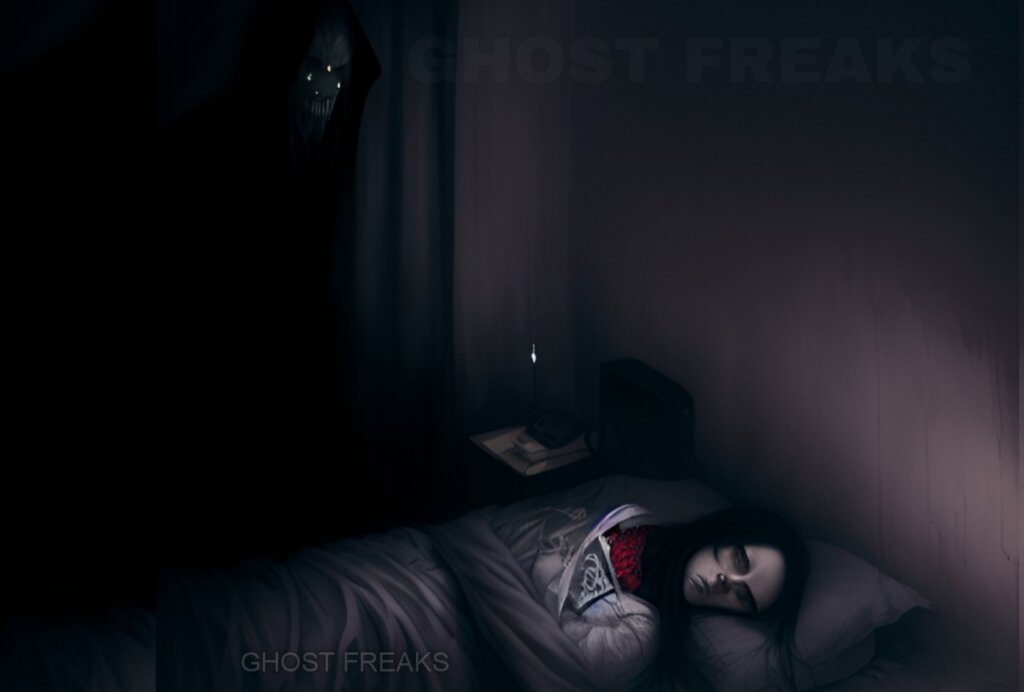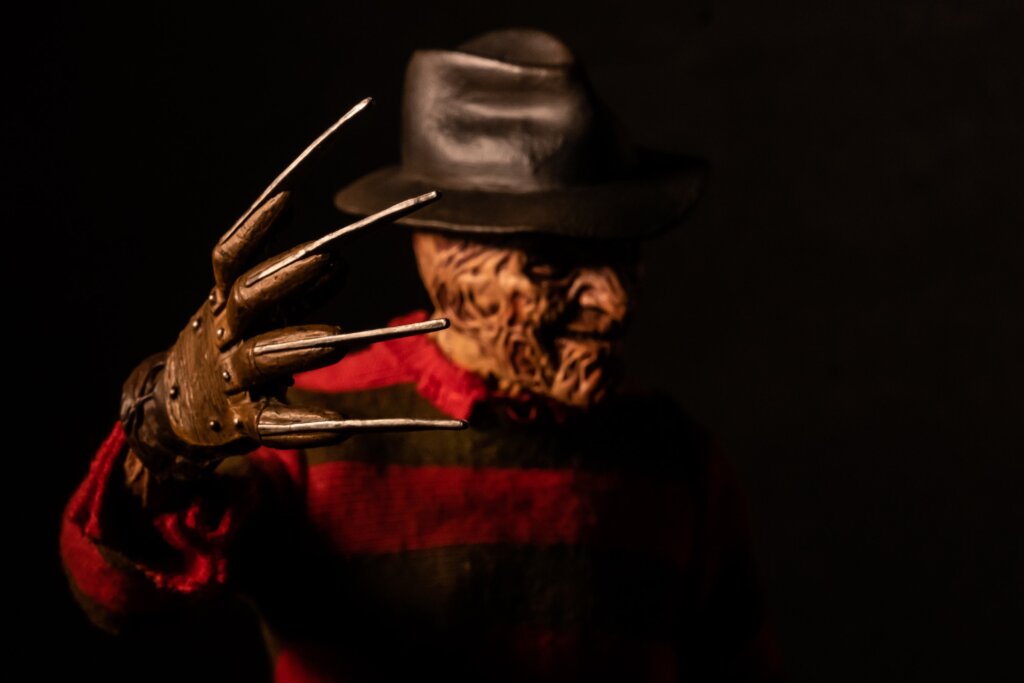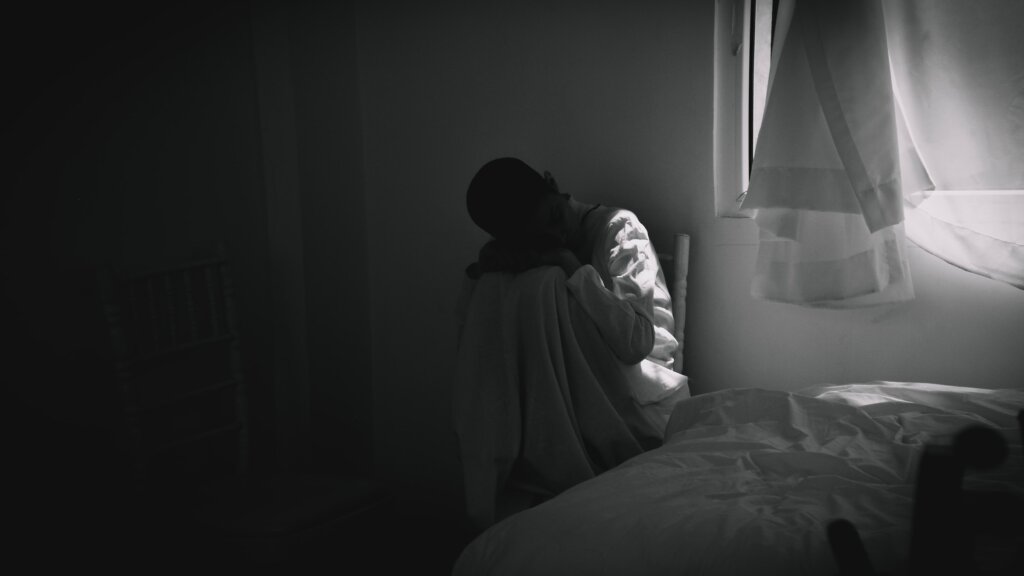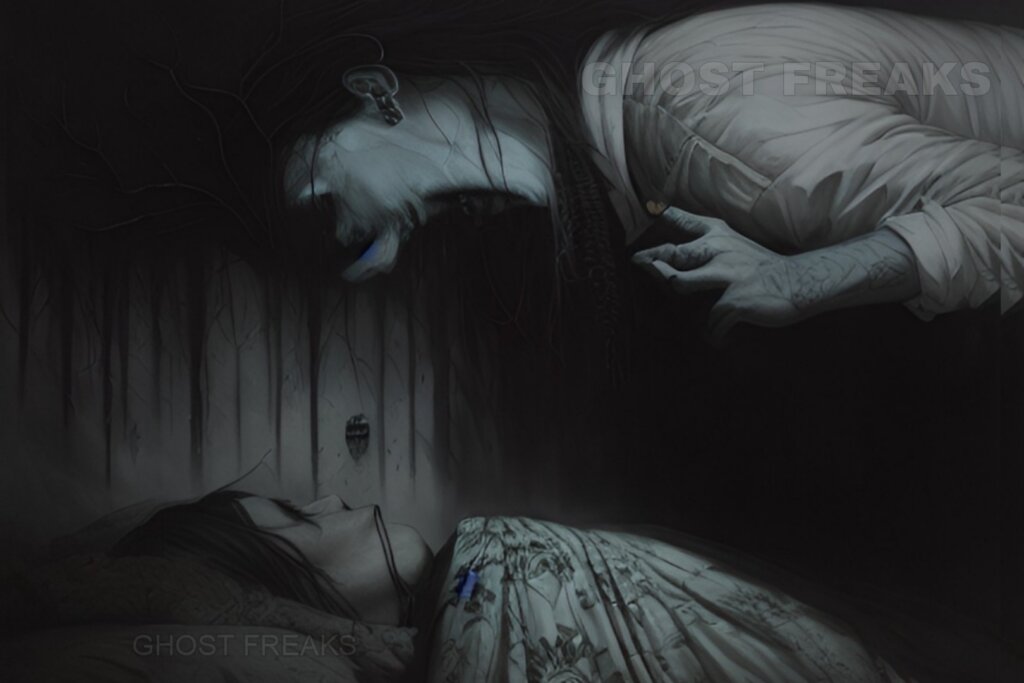Here we are going to explore the mysterious subject of sleep paralysis, sleep demon, causes, hallucinations, symptoms, treatment, and ways to reduce the risk.
After a hectic day, you go to bed at your usual time for a peaceful sleep. Now one day imagine waking up in the middle of the night paralyzed from head to toe. Suddenly you realize there’s a dark entity in your room, standing right beside your bed.
You try to scream but can’t utter a single word and slowly see that entity creeping towards you. Before you know it, the creature is right above your face. This phenomenon is called sleep paralysis; the creature we encounter is called sleep demon.
What is Sleep Paralysis and Sleep Demon?

Sleep demon, entities, are terrifying phenomena that are scarily too real for people who experience sleep paralysis. Approximately 20% of people have experienced at least one episode of sleep paralysis in their life cycle.
In 75% of these episodes, the person has a hallucination in which they hear, see, feel, or sense something creepy in their bedroom. Rest 25% still remains a mystery.
If being paralyzed when waking up isn’t terrifying enough, people across the globe encounter terrorizing bedroom entities. That includes intruders, ghosts, shadow people, and creatures ranging from witches and demons to petrifying vampires. These unearthly sights can best be described as our biggest nightmares coming alive right before our eyes.
While this may sound like something coming right out of a horror movie, experiences like this are quite common for people who experience it frequently.
But the question is why does sleep paralysis occur, what causes sleep paralysis demon, and, crucially, why does it come with these terrifying visions? Although the science behind the sleep paralysis is mostly understood, but it has remained a mystery why you might see those terrifying creatures.
What Causes Sleep Paralysis and Sleep Demon?
Sleep paralysis occurs at the passage between wakefulness and rapid-eye-movement (REM) sleep. During this phase of your sleep, you have rich life-like dreams.
To prevent you from acting out and hurting yourself in dreams, your brain tends to temporarily paralyze your entire body. Your body then enters a phase of temporary paralysis called muscle atonia.
This passage is carefully controlled by chemicals that place you between sleep and wakefulness. But sometimes, you wake up while you’re still under the influence of REM, leaving you paralyzed.
As a person is at the edge of waking up or falling asleep, they become aware that they have woken up while their muscle paralysis continues for a few seconds to several minutes.
This means that their brain can function normally as they can think, see, and breathe while they lie awake, but they are unable to move their body.
Sleep-related Hallucinations

Sleep paralysis can often cause creepy sensations of floating outside your body or gazing down upon yourself from the bedroom ceiling. Many cultures in different countries believe sleep paralysis to be supernatural in nature.
Out-of-body experiences are generally described as a type of “astral travel” where we leave our physical body to journey into a parallel dimension. But out-of-body experiences have physical evidence and are not deemed as a supernatural ability.
But the most baffling aspect of sleep paralysis is the encounter with terrifying creatures and sleep demon! According to research around 40% of all sleep paralysis experiencers report hallucinating during their respective encounter.
The experiencers often include seeing terrifying sleep demon, ghosts, shadow-like creatures who lurk in the corner of the bedroom. Entities tend to slowly approaching them, before violently choking and suffocating them and crushing their chest. In some rare cases, the sleepers have reported being assaulted by this demonic figure.
When sleep paralysis is accompanied by hallucinations, the person can see and feel unusual things around him/her. Hallucinations can be simple in nature and sometimes are more complex.
Types of Hallucinations
There are three types of hallucinations, namely intruder, vestibular-motor, and chest pressure hallucinations.
Intruder hallucinations: An intruder hallucination is like a nightmare come true. It’s like seeing or sensing something menacing in the bedroom, like a dangerous person or an otherworldly creature. This type of hallucination also includes incubus hallucinations in which the person feels physically molested.
Vestibular-motor hallucinations: A vestibular-motor hallucination is described as sensations in the body including movement, astral projection, out-of-body experiences, or feelings of bliss.
Chest pressure hallucinations: This hallucination is very malicious in nature. A person may sense a presence of a menacing creature or sleep demon near them and feel like they are suffocating or that the creature is pressing on their chest.
Sleep Paralysis Reason
Sleep paralysis in most people is often triggered by a lack of sleep. When sleep paralysis repeatedly occurs in people who are either clean or have no other underlying medical condition, it is called isolated sleep paralysis.
There are other factors that increase the risk of sleep paralysis in people that include a younger age, panic disorder, high levels of stress or post-traumatic stress disorder (PTSD), chronic pain, genetics, depression, alcohol use, and poor mental health.
Sleep paralysis is also associated with other sleep disorders, such as idiopathic hypersomnia, narcolepsy, and obstructive sleep apnea. Hallucinations are associated with certain drugs and medications that interfere with our sleep cycle and several other medical conditions.
Sleep Paralysis in Different Cultures

Sleep paralysis and sleep demon causes have been described throughout recorded history. While scientists and doctors consider sleep-related entities to be hallucinations, countries throughout history have recorded their own explanations for these experiences, each brewed from a unique cultural context.
Night-mare: In Europe during the middle ages, the term night-mare referred to a supernatural entity, that positioned itself on top of a person’s chest to suffocate them.
Ag rog: The old hag phenomenon also called ag rog was described by residents of Newfoundland in the 1970s. Believers attribute paralysis, pressure on the chest, and other symptoms to excessive work or an enemy who wants to harm the sleeper.
Kanashibari: The term kanashibari comes from a similar word that represents the magical powers of a Buddhist deity. Here monks were believed to be efficient in using their power to paralyze others.
Jinn: In Egypt, sleep paralysis is attributed to Jinn which are supernatural entities associated with witchcraft, possession, and nightmares. These entities are said to be capable to terrify or possess a sleeping person.
Khmaoch sângkât: In Cambodian refugees, sleep paralysis took a massive toll during the Vietnamese War. Khmaoch Sangkat describes a supernatural being sitting on the sleeper’s chest and choking the neck. They come in the form of hallucinations that include a spirit dispatched by a sorcerer, a demon wanting to cause fear.
Sleep Paralysis in Popular Culture

It was an article in the Los Angeles Times that would inspire A Nightmare on Elm Street creator Wes Craven to write the premise of the film. In the 1970s, the Los Angeles Times and New York Times began reporting on a mysterious medical phenomenon. Where young and healthy Southeast Asian men unexpectedly dying in their sleep from unknown causes.
It almost exclusively afflicted young refugees from Laos, Cambodia, and Vietnam, who had fled their homes as a result of the Vietnam War and the Cambodian Genocide, and no one could understand what was killing them. The papers dubbed the mysterious phenomenon “Asian Death Syndrome.”
As of 1981, at least 13 Laotian refugees were mysteriously struck dead in their sleep, according to the Los Angeles Times. The body count crossed 100 by the time A Nightmare on Elm Street hit theaters.
Wes Craven got the inspiration for his story from a specific Hmong refugee family which gave him the idea of Freddy Krueger to be the center of his imagination. The family fled the genocide and came to America, and their young son began having terrible dreams.
“He told his parents he was afraid that if he slept, the thing chasing him would get him, so he tried to stay awake for days at a time. When he finally fell asleep, his parents thought this crisis was over. Then they heard screams in the middle of the night. By the time they got to him, he was dead. He died in the middle of a nightmare,” Craven told Vulture.
How to End Sleep Paralysis Episode?
There’s nothing you could do to abruptly end the sleep paralysis episode. Though there are ways to interrupt ongoing episodes as they are happening so that the episodes don’t last longer.
It’s an important coping strategy for people with sleep paralysis. Possible ways for negating an episode of sleep paralysis include:
Focusing on relaxing the body and mind
Attempting to twitch fingers or toes
Moving the arms, legs, or torso
Trying to move the mouth or eyes
Being touched by another person
Being roused by an alarm clock
Praying or mentally reciting religious texts
Researchers have suggested that lucid dreaming may be another potential way for people to gain control over their dreams and sleep paralysis. Here’s an article for you on how lucid dream in 5 steps.
Though it’s not easy to master the art of lucid dreaming instantly. However, learning methods for lucid dreaming might help people turn horrifying hallucinations into more calm and positive experiences.
Sleep Paralysis Treatment and How To Prevent It?

There are certain ways to prevent sleep paralysis and sleep-related hallucinations, consider the potential reasons, and address any underlying triggers for sleep paralysis episodes.
Know about sleep paralysis: Many people feel less afraid of sleep paralysis once they understand that hallucinations are frightening but harmless. Understanding what goes on during sleep-related hallucinations can reduce the tension and fear they cause.
Relaxing before bed: Relaxing your mind and body will not only help you sleep better, but it may also reduce the chances of having an episode of sleep paralysis.
Shifting while sleeping: Changing your sleeping positions may also help prevent episodes of sleep paralysis. For example, if you are a back sleeper, try sleeping on your side or stomach instead.
Maintain your sleep schedule: Improving your sleep hygiene may help reduce episodes. Maintain a consistent sleep schedule, and create a relaxing sleep cycle by avoiding things that interfere with sleep, like caffeine, alcohol, and bright lights.
Notice sleep-related issues: Keep records of both nighttime sleep issues and daytime symptoms. Tracking these experiences over time may help you understand early signs of sleep paralysis and lead to a more helpful conversation with your doctor.
If you’re having advanced sleep-related hallucinations and extensive sleep paralysis episodes, it is better to talk to a doctor. A doctor can accurately assess your condition, provide education, and recommend the best treatment approach.
Find the causes and don’t let sleep paralysis demon consume you and take over your peaceful nights.
